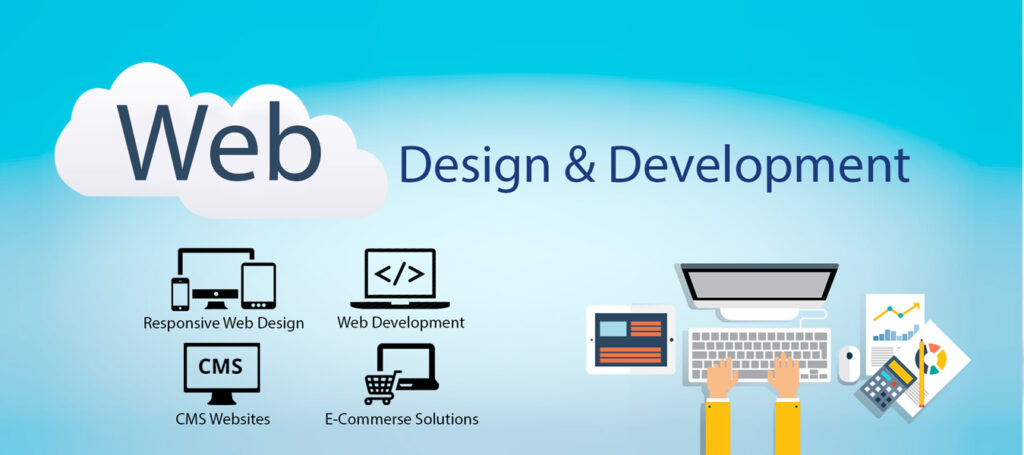Web Design & Development

The concept of web design and development has been around for about as long as websites have existed. It used to have a much simpler definition because website creation used to be a much simpler process.
When you compare the first website, which came out in 1991, to modern websites, you can really see how much websites have evolved. Today, creating and maintaining a website is more complex, and involves an entire ecosystem of roles and skill sets.
For designers, it can be difficult to know exactly where you fit into this ecosystem. This article outlines the major aspects of the website creation process, offering a clear picture of your role, the roles of others, and the skill sets involved.
Design vs. front-end development vs. back-end development
To keep it simple, let’s separate website creation into two categories: what the users sees, and what the user doesn’t see.
What the user sees takes place in a browser and involves design and front-end development. Design defines a website’s colors, layout, font, and images—all the stuff that goes into a website’s branding and usability—and requires tools like Photoshop, Illustrator, Fireworks, and Sketch.
Using coding languages like HTML, CSS, and Javascript to implement that design is called front-end development. These languages make it possible for users to interact with buttons, images, text, contact forms, and navigation menus. And they’re integral to responsive and adaptive design.
Some designers code and some front-end developers design. Some designers don’t touch a piece of code. And some front-end developers stick to coding and nothing else. Helpful, right?
What the user doesn’t see takes place on a server and involves back-end development.
A website needs a back end to store and organize all the data that comes through the front end. So if a user buys something or fills out a form, they’re entering information into an application on the front end of the website. And that information is stored in a database that lives on a server.
A website works the way you want it to because the front and back ends of a website are always communicating. A back-end developer is like the conductor. They make sure applications, databases, and servers work together harmoniously using languages like Ruby, PHP, .Net, and Python along with frameworks like Ruby on Rails and Code Igniter.
Elements of web design
In his essay, The Politics of Design, the iconic designer Paul Rand wrote, “Design is a problem-solving activity. It provides a means of clarifying, synthesizing, and dramatizing a word, a picture, a product, or an event.”
Web designers are constantly solving problems for their users. Websites should make it easy for users to go where they want to go and do what they want to do. A frustrated user is less likely to stick around, let alone come back to a website.
That’s why each web design element is in service of making the website as easy to use as possible: so people visit and interact with the website over and over again.
Layout: The layout is the arrangement of a website’s header, navigation menu, footer, content, and graphics. The layout depends on the website’s purpose and how a web designer wants the user to interact with the website. For example, a photography website would prioritize big beautiful images, while an editorial site would prioritize text and letter spacing.
Visual hierarchy: A user should be able to access the information they need by glancing at a website. This is where visual hierarchy comes in. Visual hierarchy is the process of determining which aesthetic aspects of the website should stand out using size, color, spacing, and more.
The headings in this article are a basic example of visual hierarchy. They quickly let you, the reader, know what this article is about.
Navigation: Navigation helps a user get from point A to point B using navigational tools like site architecture, menus, and search bars. Simple, effective navigation helps users find the information they’re looking for quickly and easily.
Color: Color gives a website personality, makes it stand out, and shows the user how to take action. The color palette might be determined by a brand’s existing identity or by the content of a website (like how this plant website uses hues of green). A consistent color palette helps give order to a website.